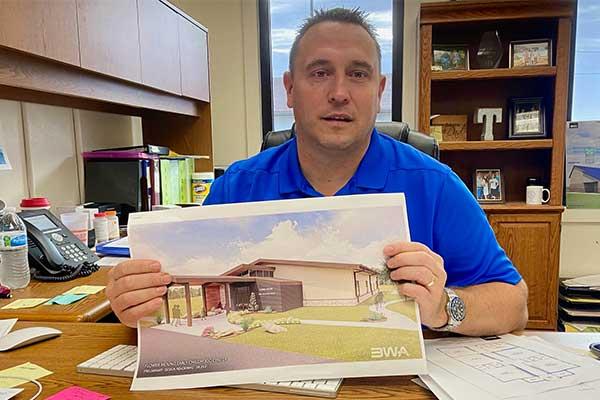LAWTON — Voters who live in the Flower Mound Public School district will decide the fate of the district’s bond issue proposal Nov. 9.
The district is asking voters to approve a 10-year, $2 million bond issue to help finance an early childhood center on the school campus. The new building will include a safe room that will provide shelter for students in case of severe weather.
The building itself will cost between $2.8 and $3 million, but the Federal Emergency Management Agency has approved a $1.2 million grant to help cover the cost of the safe room, Superintendent Dax Trent said in an Oct. 13 interview. If the bond issue passes, it will generate about $2 million.
“FEMA will pay for 75 percent of our safe room portion, and so we’ve shrunken down our building to where it’s mostly safe room,” Trent said. “And so, our bond issue is to ask our community to support the district’s portion of that.”
Trent said the district had to build a buffer into the estimated cost of the project to account for rising material prices. He noted that the total cost includes the expense of site upgrades to create additional parking near the early childhood center.
“The $2 million won’t cover all the expenses for everything we need to do, but it will cover a big enough portion where the district can kick in its additional resources,” Trent said.
The early childhood center will be located west of the gym on a circle drive, making it easier for parents to drop off and pick up their students. An additional parking lot will be built in the sports field directly in front of the new building.
Pre-kindergarten and kindergarten students are currently housed in separate buildings, while first-graders are in portable buildings. But when the early childhood building is up and running, pre-K and kindergarten students will move into the new facility and first-graders will move out of the portable buildings into the pre-K classrooms.
The current kindergarten building will become administrative and business offices.
District officials are not planning to expand the school, but it needs more space to accommodate the students it has now, Trent said.
“We’re not using this bond issue to grow,” he said. “We’re not adding kids or adding grades. We’re so compacted as it is, it’s just going to give us some elbow room to provide even more quality product.”
Taxpayer impact
A $2 million bond issue would mean that property taxes in the district would go up by about 20%, Trent said. He said a property owner who currently pays $1,000 in property taxes each year would see their annual tax bill rise to $1,200 – about $16 more per month.
Five years ago, Flower Mound voters narrowly rejected a $6 million bond issue to cover the cost of building a larger facility that would have included a safe room. The district did not have any grant funds available for that project, which would have caused property tases to go up by about 48%.
After the 2016 proposal failed, district officials went back to the drawing board to see what they could do to make the project less daunting for taxpayers.
Officials discovered that FEMA offered grants to help build safe rooms, and they started putting a grant application together in 2017, Trent said. Ten months later, the school submitted its application to FEMA for consideration.
The COVID-19 pandemic and other factors may have caused delays in FEMA’s approval process, Trent said. He said the process for Flower Mound’s grant application for about 2 ½ years, and school officials learned in late August that FEMA had approved a $1.2 million grant for a new safe room.
Looking back, Trent said he was glad that the 2016 bond issue proposal failed, because it gave school officials a chance to develop a better plan.
“The project is cut in half, but we’ve cut the proposed tax increase down by two-thirds,” he said. “So, we’re excited about that.”


